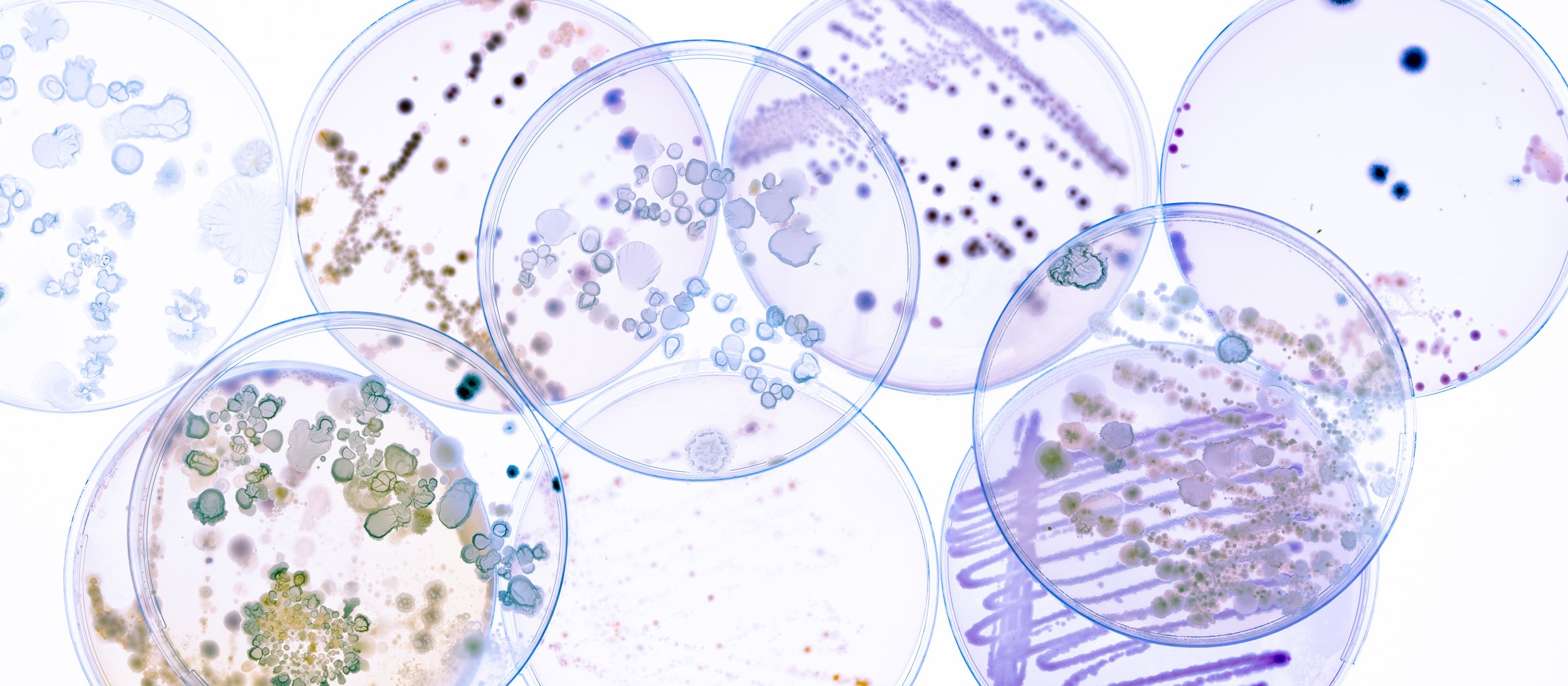
Research
As a Ph.D. student in the Taga Lab at UC Berkeley, my research interests were primarily focused in two areas: microbial nutrient interactions and science training in higher education. These interests led me to work on research projects exploring microbial cell death and nutrient release, scientific decision-making processes around genetic technologies, and doctoral student socialization in the biological sciences.
Microbial Nutrient Interactions
Microbes inhabit many different environments; from oceans and soils to the human gut. In nature, microbes live in communities and rely on each other for survival. For example, not all microbes are able to produce the nutrients they require for growth, and rely on others in the community to provide those nutrients. My project explored microbial cell death as a mechanism of nutrient release in microbial communities, and I investigated this using synthetic co-cultures of cross-feeding bacterial strains.
On the left is an illustration of a microbe with a permeable membrane with the arrows directed outside the cells. These arrows point to the words inorganic matter, amino acids, cofactors, nucleobases and DOM (dissolved organic matter). On the right is an illustration of two differently colored bacterial populations (green and orange) living in close proximity to each other. The orange bacterial population is being infected and lysed by bacterial viruses.
Doctoral Student Education
The future of STEM graduate education remains a national concern in political, economic and educational spheres. Doctoral education is a unique stage of scientific training, and is often relied on for providing workers who are trained to advance new knowledge and develop new technologies. Many marginalized communities continue to be underrepresented in the sciences and in scientific careers, which also excludes them from social, economic and political power structures. This work aims to highlight the various elements of socialization in the lab sciences that shape doctoral student training experiences, and reveals how the culture of science differently impacts each trainee.
An image of a laboratory bench with test tubes, beakers, pipettes and a variety of other common wet lab related equipment used for experiments.
Decision-making processes in Scientific Communities
CRISPR/Cas9 is a genome editing technology that is revolutionizing the way biomedical research is conducted, and its therapeutic potential is just beginning to be understood. Much of the decision-making around how this technology should and should not be used has been left to a select group of ‘experts’. With my collaborator, Santiago J. Molina (Sociology, PhD candidate), we used archival analysis and in-depth interviews with scientists from gene-editing committees to explore practices of decisioning-making and self governance within the scientific community. Through this work we wanted to encourage individuals to challenge who participates in making decisions about genome engineering and create political education resources about the structure and biases of science. You can find some of this work posted here by Free Radicals, an activist collective that creates accessible resources for political education at the intersection of science and social justice.
An illustration depicting the public performance of scientific expertise. Four white figures in a science laboratory handle puppeteering strings that hold up a white lab coat. A crowd watches the lab coat as if they are watching a marionette performance. Artwork by Sophie Wang .


